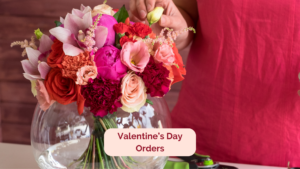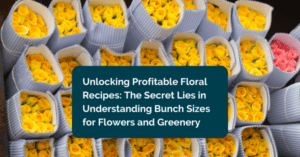Lisianthus’s beauty makes it a popular choice for wedding bouquets, but without proper planning, overordering can lead to unnecessary expenses. Double-petal varieties make an excellent substitute for roses. Planning wedding floral recipes involves a delicate balance between creativity and efficiency. In this blog, we will explore how to use Lisianthus effectively in wedding floral arrangements to avoid overordering while maintaining the elegance and charm of the wedding bouquet.
1. Leveraging Lisianthus in Wedding Bouquets
Lisianthus is incredibly versatile, offering single and double-petal varieties that showcase their beauty when fully open. Each bunch contains ten stems, with multiple laterals on each stem and delicate sage green leaves that add texture to your arrangements. Due to its unique structure, Lisianthus can provide significant visual impact with relatively few stems. This makes it ideal for wedding bouquets where budget and aesthetics must be balanced.
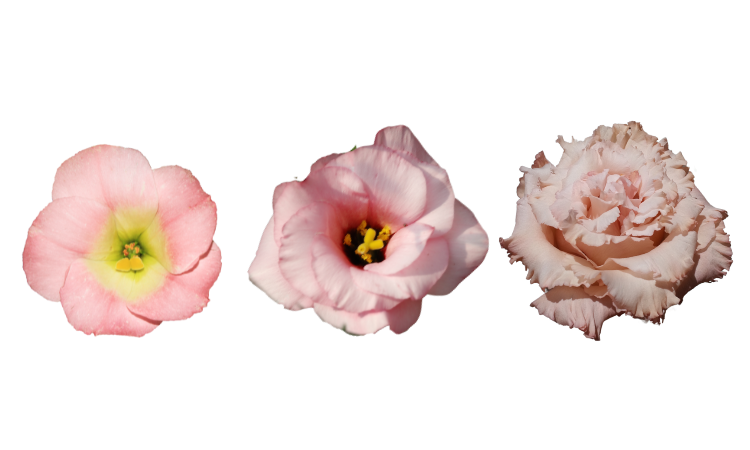
To maximize Lisianthus in your bouquets, let the flowers fully open. This highlights their airy, dancing quality and ensures you get the most “bang for your buck.” By focusing on the flower’s natural beauty, you can create elegant, full-looking bouquets without the need for overordering.

2. Strategic Placement of Lisianthus in Wedding Floral Designs
Understanding where to use Lisianthus is key to maximizing its value. Place Lisianthus in areas where its beauty can be fully appreciated, such as bridal bouquets, boutonnières, and short centerpieces. These are focal points where the intricate details of Lisianthus can be seen and valued.
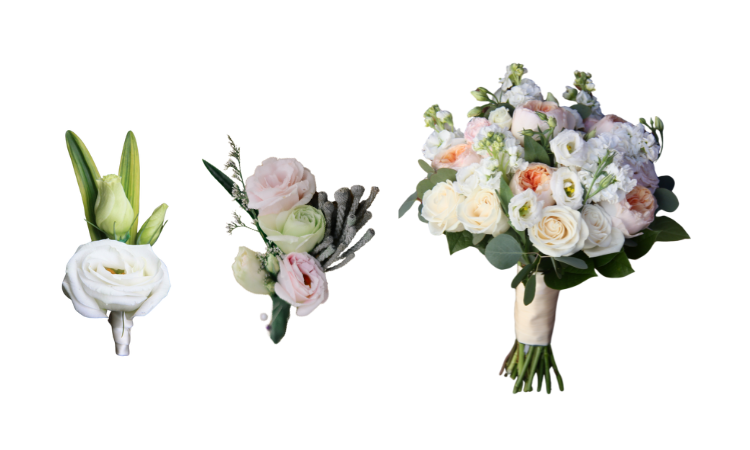
For larger arrangements, such as head tables or bud vases, where guests can closely admire the flowers, Lisianthus adds an elegant touch without overwhelming the design. Avoid using Lisianthus in large installations or areas where it may not be as visible. This can lead to unnecessary costs without adding significant visual value. By strategically placing Lisianthus, you can ensure that each stem contributes to the overall impact of your wedding floral designs.
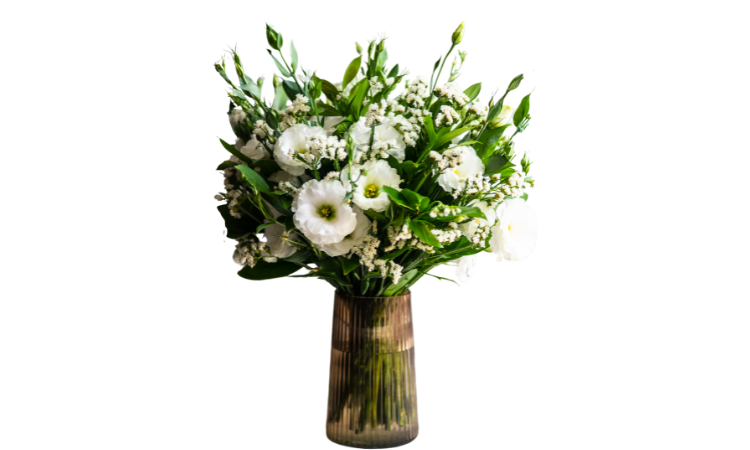
3. Accurate Planning for Lisianthus Quantities in Wedding Bouquets
To avoid overordering Lisianthus, accurate planning is essential. Start by understanding the current market prices, which have risen from $12 to $13 per bunch to $22 to $24 per bunch.
This price increase means each Lisianthus stem costs between $2.30 and $2.40. Thus, it’s crucial to calculate your needs precisely. Here is what one stem of Lisianthus can look like.
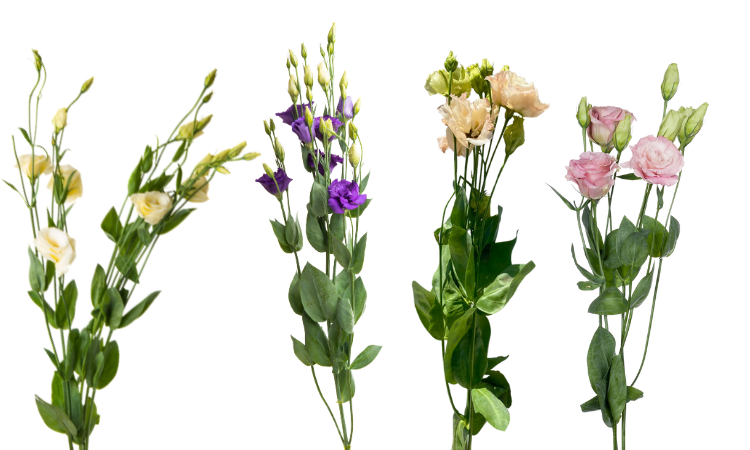
When planning your bouquets, consider the number of Lisianthus stems needed based on the size and style of the wedding bouquet. Typically, you can get three flowers later from each stem of lisianthus. For example, a larger bouquet may need more Lisianthus. However, by pairing it with other flowers, you can reduce the overall quantity needed. Also, account for potential wastage by cleaning and preparing the stems carefully to minimize breakage. Removing leaves three-quarters of the way up helps prevent bacterial growth and allows the flowers to fully open, ensuring you get the most out of each stem.
4. Effective Use of Containers for Processing and Storing Lisianthus
Proper handling and storage of Lisianthus are crucial for keeping the flowers in top condition for your bouquets. After receiving Lisianthus, cut the elastic off the bunch and gently separate the stems. Clean each stem individually to reduce the risk of breakage and remove leaves to prevent bacterial growth.
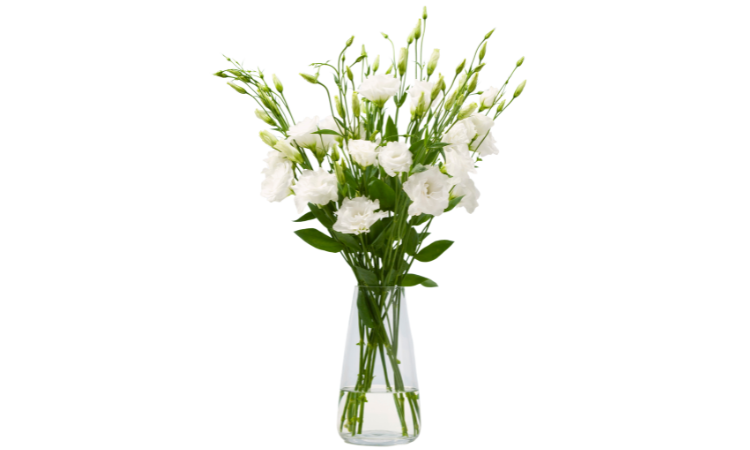
For smaller quantities, use wide cylinder vases, 6 to 10 inches in width, to hold the Lisianthus while processing. For larger quantities, such as 10 or more bunches, medium-sized round buckets are more appropriate. These containers provide ample space for the stems, allowing them to stay hydrated and fresh while you prepare your wedding floral recipes. Proper storage maintains the quality of Lisianthus and helps you avoid unnecessary waste, further preventing overordering.
5. Communication and Collaboration with Clients on Lisianthus Usage
Working closely with your clients is essential to prevent overordering Lisianthus. Educate them about the versatility and beauty of Lisianthus, explaining how it can be used effectively in wedding bouquets. Discuss their vision in detail, particularly how they want Lisianthus to feature in their floral arrangements.
Clients may not always be aware of the current market prices or the cost implications of overordering. By providing guidance and suggesting alternative flowers, you can create a floral recipe that meets their aesthetic goals while staying within budget. Clear communication with your clients will help ensure you order the right amount of Lisianthus, avoiding excess costs and maximizing the value of each stem.
Using Lisianthus effectively in wedding floral recipes involves more than creating beautiful bouquets—it’s about balancing aesthetics with profitability. By leveraging Lisianthus fully, placing it strategically in wedding designs, planning quantities accurately, handling and storing it properly, and collaborating closely with clients, you can avoid overordering and ensure each arrangement is both stunning and cost-effective. This approach will not only enhance your floral designs but also contribute to a more successful and profitable floral business.


